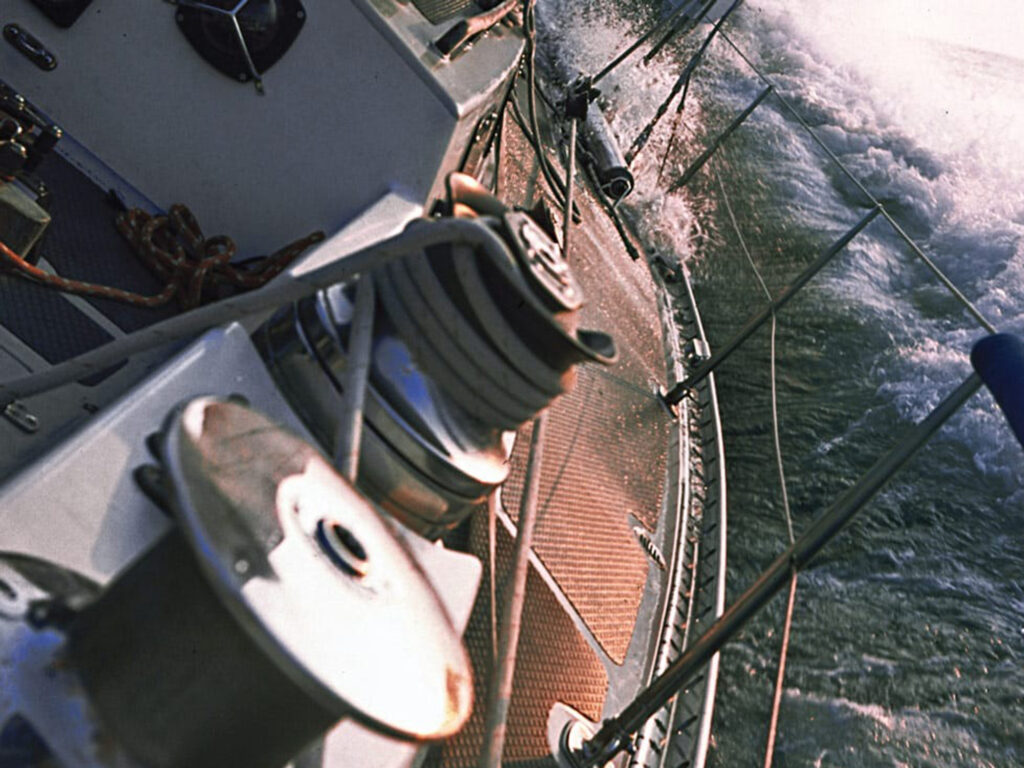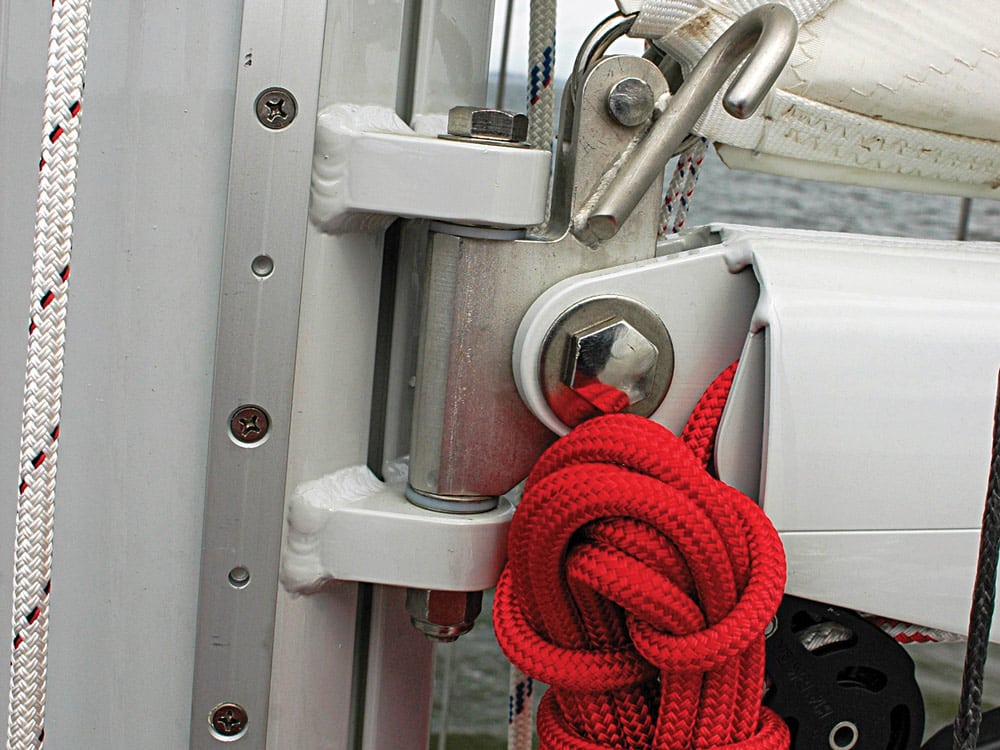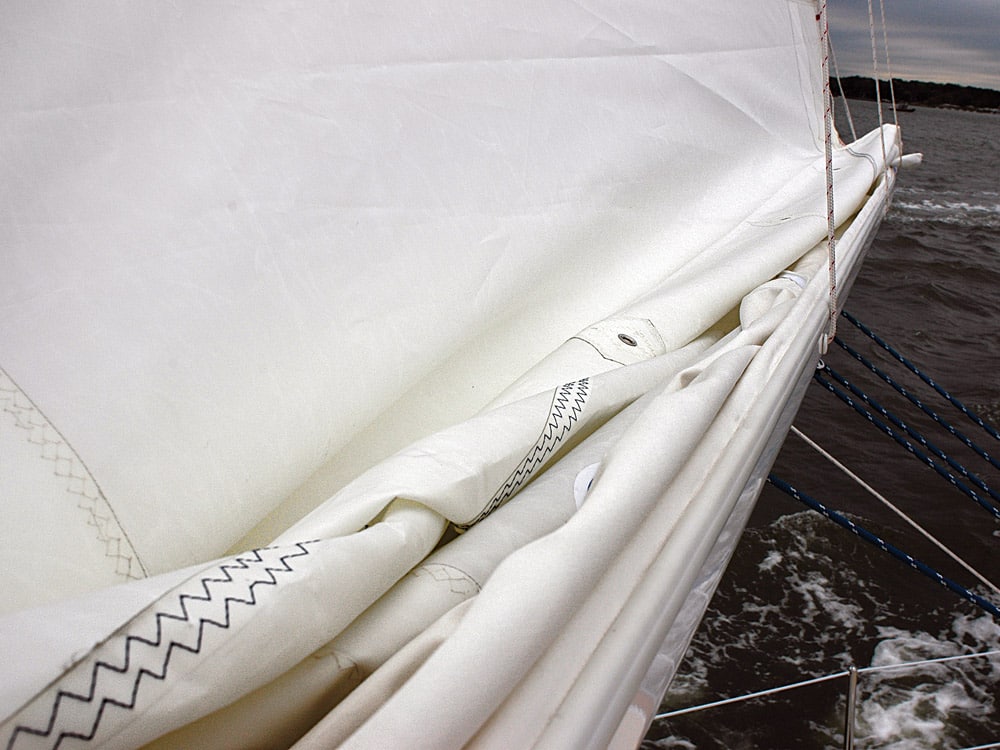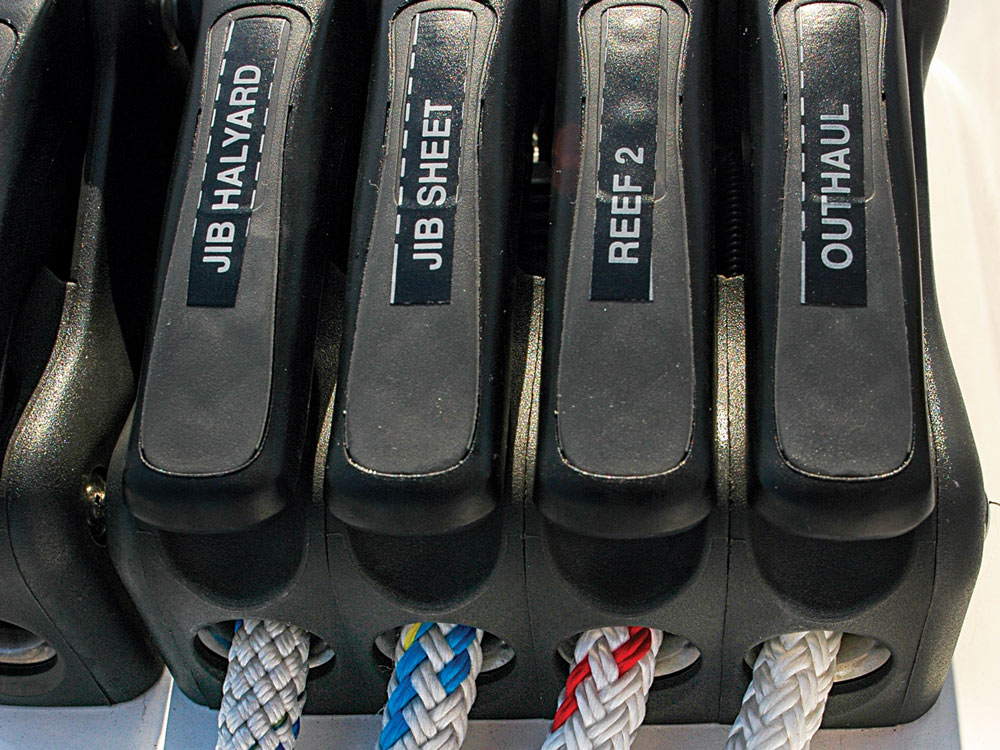
When the rail is submerged and the angle of heel exceeds the crew’s inclination for comfort, you’re either in a race or you’re well past the time to take a reef.
Most cruisers prefer to savor their passagemaking rather than shave a few seconds off each mile. So, when it comes to reefing, it makes sense to get an early start. The goal is to have the reef tucked in before the anemometer announces that you’ve missed the sweet spot — a narrow boundary that separates “way too early” from “way too late.”
There are three significantly different approaches to reducing mainsail area: slab reefing, in-mast roller reefing and in-boom roller reefing. Each approach delivers a reduction in sail area and repositions the mainsail’s center of effort. In addition, a good reef flattens the sail, keeps the draft from migrating too far aft and prevents leech flap.
Many cruisers prefer reefing from the cockpit, while a few of us still opt to work at the mast. Regardless of your choice, clip your harness to a jackline or hard point while reefing, especially at night or in rough seas. Some crews turn their boat head-to-wind while reducing sail, but they are usually not offshore, thrashing through a seaway.
I prefer a close reach, or even a little deeper point of sail, as the optimum reefing angle. It allows you to spill breeze and depower the mainsail without flogging the sailcloth, and still keep the boat making way under a well-trimmed jib or staysail.
Once on course and ready to reef, it’s important to depower the mainsail. Begin by easing the sheet so the sail is just on the verge of a luff. The person on the helm should steer carefully to maintain this point of sail, and make sure that the boom vang has been released. Not doing so makes reefing more difficult and can even lead to luff damage to the mainsail or hardware that attaches it to the mast.

The cornerstone of a good reef is a tight luff, and that hinges on having a secure, carefully positioned new tack point such as a gooseneck hook or a snap shackle on a short pendant. Such hardware holds the tack ring close to the mast and proximal to the gooseneck. Sail material, track and slide dimensions, and the stack height all affect the location of the new tack point. A good sailmaker will take these issues into consideration. The bottom line is to provide a secure, well-placed floating or gooseneck-attached tack point that can handle the halyard tension it takes to set a flatter well-shaped, reefed mainsail.

Those using single-line (jiffy) reefing systems face a different challenge. These make life easier by controlling both the tack and clew via the same line, and even eliminate the need for a sailor to go on deck. But they also introduce a new problem. The single-line approach makes positioning the tack point more difficult. Some sailors lessen the negative effect by carefully setting the line pull angles at the gooseneck and outboard end of the boom. Their goal is to establish line tension that keeps the tack close to the gooseneck while adding adequate outhaul and downhaul to the clew. Jiffy reefing changes the order of the lines handled. It’s important to first tension the reefing line before adding the final halyard tension. When slab reefing, you do just the opposite: You tension the halyard and then pull the clew aft and tight.
As with most tasks aboard sailboats, mainsail reefing can be a highly debated topic, and there’s no single solution that meets all needs. However, there are a few additional hints that will make the job easier. If you’re singlehanding, try reefing the mainsail in a heave-to position. The maneuver smooths the seas, steadies the motion and decreases pressure on the sail.

Heaving to involves a tack without the release of the jib sheet. The backed jib causes the bow to bear away, but by turning the helm to windward, the rudder offsets the force of the backed headsail. The mainsheet is eased until the sail is on the verge of a full luff, allowing the crew to easily tuck in a reef. Once the reef is set, the crew sheets in the mainsail, brings the jib over to the same side and, once the boat gathers way, the crew can tack back onto the original point of sail.
Another valuable reefing aid is the addition of a second self-tailing two-speed winch so both the main halyard and the reefing line can be simultaneously kept in play. If you’re heading offshore, consider adding a topping lift, even if you have a rigid vang that supports the boom. It will allow you to raise the outboard end of the boom when reefing — a gesture that makes the reef-setting process even easier. And lastly, stay focused on keeping the mainsail depowered throughout the reefing process.
Ralph Naranjo’s latest book, The Art of Seamanship, shares a lifetime of lessons learned aboard various boats at sea.








